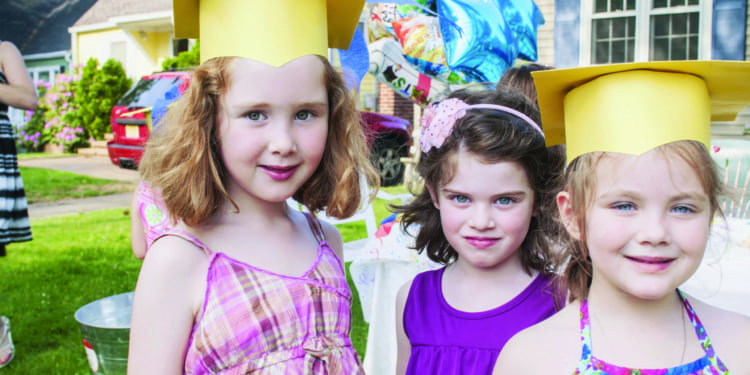Question: I am starting to look at preschools for my son, who will turn 4 in the fall. What should I be looking for?
Answer: Ah yes, ’tis the season for preschool open houses. The choices can feel a little overwhelming, but try to relax and keep it simple.
I suggest visiting a few preschools in your area and focusing on the things that matter most to you. Many preschools will be hosting open houses this month or allow you to schedule a tour. Ask the director if you can observe a class in progress in order to get the best sense of classroom dynamics and teacher approach. All preschools you consider should be licensed and have qualified, caring teachers. Beyond those basics, what should you look for?
I strongly recommend a preschool that puts play front and center. Many preschool programs are prioritizing academics by giving children worksheets and increasing time for direct instruction. Such approaches are developmentally inappropriate at the ages of 3 and 4 (and I would even argue at 5). Academics certainly have a place in preschool, but skillful teachers will know how to make academic content fun and engaging for this age group through play, song, rhyme, drama, stories and hands-on activities like building blocks. Play allows children to build all kinds of intellectual and emotional skills, such as problem-solving and cooperation. These skills are the foundation for kindergarten and the early elementary years. Bottom line: Beware the preschool that does not prioritize play.
A quality preschool will also understand that young children need to move frequently and be taken outside every day. Ask about the preschool’s policy for recess and other opportunities for outdoor play. Ideally, kids would be getting outside to run around at least 30 minutes a day. Research shows that direct experience with a natural environment improves student learning and behavior, and promotes emotional wellbeing. If you can find a preschool with green grass, trees, garden space and other natural elements, so much the better!
Lastly, the school’s approach to discipline must be considered. This is why observing a class is ideal; it will allow you to see how the teacher manages a classroom and addresses student behaviors. If punitive measures, such as time-outs, are used, I would be wary. Time out and other punishment/reward systems, such as the popular “Stop Light” method, shame children for having a problem, rather than helping them to solve their problems. Instead, look for a school that builds skills and teaches children what TO DO. For example, some schools use a “peace chair” as an alternative to time out. A child who needs a break from the group can go to the peace chair with an adult and practice a self-control strategy such as deep breathing. With support and guidance from a caring grown-up, the child can process their behavior and learn a healthy replacement behavior.
Socialization, relationship-building, and conflict resolution are at the forefront of creating a safe and positive classroom. The classroom should emphasize manners and respect for all, as well as personal responsibility. When it comes to discipline, emphasis should be placed on teaching rather than punishment.
Now you can go into the open houses with these three questions to filter out the better schools:
- What is the role of play in the day?
- What is the policy on outdoor time?
- How are the students taught self-regulation and conflict resolution?
Good luck in your search, and remember, no choice is irreversible. If a preschool doesn’t turn out to be a good fit for your child, you can always find a different one.
Julia, a PCI Certified Parent Coach and Capital District mom, helps other parents look within for the answers they seek and believes there is no “one size fits all” when it comes to child-rearing. Send you questions and comments to [email protected].



